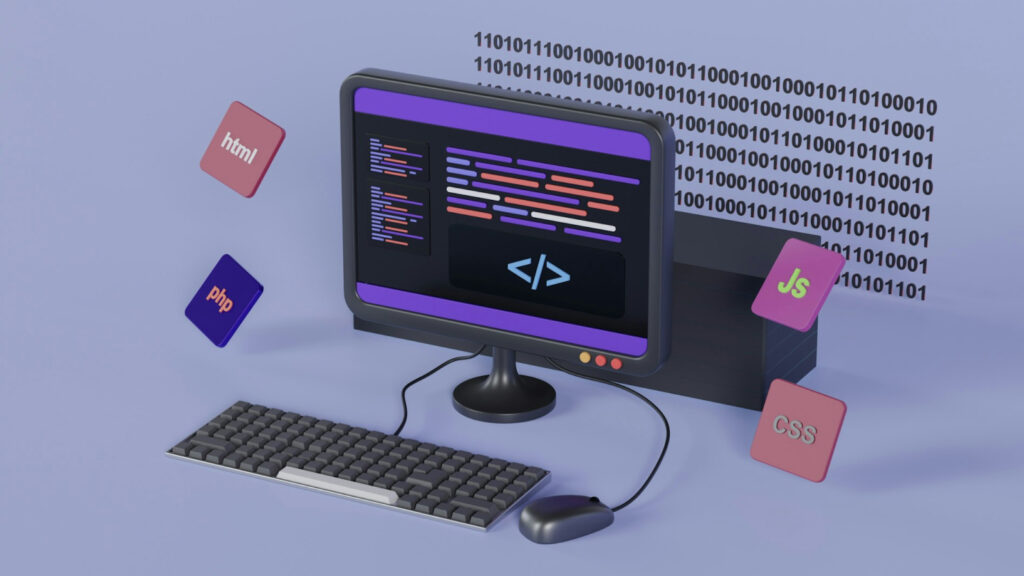
HOME / BLOG / STATISTICS
Programmatic Advertising Statistics 2025: 91+ Stats & Insights [Expert Analysis]
- November 10, 2025
- Bill Nash
- 4:08 pm
Table of Contents
Global Market & Spend Statistics
The global programmatic advertising market is estimated to be worth $550B+ in 2025 (industry forecast).
90%+ of all digital display ads are purchased programmatically in 2025 (industry consensus).
Programmatic ad spend has grown at an average 13–18% annual rate since 2018 (market trend estimate).
By 2027, programmatic is projected to account for over 95% of all digital display spending.
Programmatic video ad spend surpassed $120B globally in 2024 (industry report).
In the U.S., 88% of digital display ad dollars go to programmatic buying (media buying survey).
Programmatic audio ad spending has grown by 200%+ since 2020 (digital audio trend).
Mobile accounts for 71% of all programmatic ad spend (DSP usage statistics).
Programmatic Direct deals represent approximately 21–29% of programmatic spend globally (industry estimate).
Real-Time Bidding (RTB) makes up 60–65% of programmatic transactions (exchange data trend).
Performance & ROI
Advertisers typically see 25–45% lower CPMs with programmatic compared to direct-buy display (DSP performance averages).
Programmatic campaigns improve conversion rates by 10–30% when paired with audience data (media analytics benchmark).
Retargeting through programmatic increases ROAS by 2–4x on average (performance marketing benchmark).
Brands using dynamic creative optimization (DCO) see 20–60% higher CTRs (DCO performance survey).
Programmatic ads reduce wasted impressions by 15–35% using frequency controls (campaign optimization report).
Advertisers using AI optimization experience up to 2.7x performance lift (AI media efficacy study, industry reported).
Using lookalike audiences increases programmatic lead quality by 18–40% (lead gen benchmark).
Multi-channel programmatic campaigns produce 22% higher recall vs single-channel (brand lift studies).
Dayparting optimization can reduce CPC by 8–14% (bid strategy benchmark).
Programmatic campaigns with video components see 3–5x higher engagement vs display-only (engagement measurement study).
Channels & Formats
61% of marketers now run programmatic CTV/OTT campaigns (connected TV survey).
Programmatic CTV ad spend is projected to exceed $45B by 2026 (market forecast).
Video represents ~50% of all programmatic spend (DSP trend analysis).
Programmatic audio now represents ~4–7% of total programmatic budgets (audio growth estimate).
Native programmatic ads account for 15–20% of budgets (native advertising report).
Digital Out-of-Home (DOOH) programmatic spending has grown 400%+ since 2019 (OOH digitization trend).
In-app display accounts for 70%+ of mobile programmatic impressions (mobile ad exchange study).
Social programmatic campaigns drive 2–3x higher video completion rates vs open web video (platform performance report).
Banner CTRs in programmatic average 0.05–0.12% depending on vertical (benchmark).
Video completion rates on CTV average 92–97% (CTV analytics).
Audience Targeting & Data
1st-party data usage has increased 40–70% since cookie deprecation announcements (privacy adaptation survey).
3rd-party cookie loss is expected to reduce targeting accuracy by 20–40% initially (privacy impact models).
Contextual targeting adoption rose 2–3x between 2022–2025 (contextual comeback trend).
Brands that unify CRM + ad data see 30–50% better attribution accuracy (data integration report).
Location-based programmatic targeting improved footfall attribution by 18–32% (geo-matching study).
80%+ of B2B programmatic campaigns use firmographic targeting (B2B programmatic survey).
Behavioral audience segments remain the most purchased audience type (~48% of spend).
Demographic segments represent 25–30% of purchased audience data.
Lookalike modeling usage increased 3x year-over-year in e-commerce programmatic (retail analytics).
Advertisers using identity graphs report 12–25% lower acquisition cost (identity resolution study).
Fraud & Brand Safety
20–25% of programmatic impressions are at risk of fraud without verification tools (IVT benchmark).
Using fraud prevention tools reduces invalid traffic by 60–90% (ad security vendor testing).
65% of buyers now require ads.txt or sellers.json compliance (exchange policy adoption).
CTV fraud is estimated to have increased 44–90% year-over-year (CTV risk report, range represents multiple estimates).
78% of brands list brand safety as a top concern in programmatic (agency survey).
Private marketplaces (PMPs) reduce fraud exposure by 35–60% (auction quality report).
Programmatic ad verification increases measurable viewability by 12–25% (viewability measurement study).
Viewability minimum standards are ~50% for display and 70% for video (IAB baseline).
Attention measurement tools adoption grew 4x from 2022–2025 (emerging metric trend).
About 11–17% of bid requests contain misrepresented ad inventory data (supply path transparency review).
Retail Media & Commerce
Retail media programmatic spend has grown 25–60% YoY since 2021 (retail ad networks growth).
Retail media networks now represent ~20% of total programmatic budgets for consumer brands.
Amazon, Walmart, Instacart, and Kroger account for 75% of retail media programmatic spend.
Retail media ROAS averages 3–8x depending on category (eCommerce attribution benchmarks).
Retail media video formats have grown 5x in the last 2 years (retail media diversification trend).
First-party checkout data improves audience match rates by 30–70% (CRM-onboarding benchmark).
62% of DTC brands run programmatic via retail media networks (DTC marketing survey).
Sponsored product placements remain the highest-ROI retail media format (performance ranking).
CPG brands allocate 12–25% of digital budgets to retail media (category spend trend).
Retail media is projected to surpass $160B globally by 2028 (market forecast).
Industry Adoption by Sector
E-commerce is the largest programmatic-spending vertical at ~26–32% of spend.
Financial services represent ~8–11% of programmatic demand.
Automotive advertisers increased programmatic CTV usage by 35–55% in 2024.
Healthcare & pharma programmatic spending has doubled since 2021 due to relaxed ad rules.
Travel programmatic investment rebounded 200%+ post-pandemic recovery.
Education sector uses programmatic lead gen at ~65% adoption.
Real estate uses geo-targeted programmatic in 70%+ of campaigns regionally.
Entertainment & streaming brands drive 40–60% of CTV bidding volume.
Gaming app companies dedicate 50–75% of UA spend to programmatic (mobile gaming growth).
B2B SaaS campaigns have seen 25–45% increased CPL efficiency using programmatic.
Agency & Advertiser Behavior
82% of agencies manage both programmatic and paid social in integrated buying teams.
Self-serve DSP adoption has increased by 30–50% among mid-market brands.
In-house programmatic teams exist in ~38–46% of large brands.
61% of marketers say measurement complexity is their top challenge.
74% of brands expect to increase programmatic CTV budgets next year.
47% of advertisers use multi-DSP setups for supply path optimization.
Agencies report 15–25% time saved using automated bid strategies (workflow efficiency survey).
55% of planning teams now include data scientists or analysts (organizational evolution trend).
41% of advertisers are exploring attention-based bidding models.
88% of media buyers prefer transparent supply chain reporting in DSP dashboards.
Creative & Messaging
Personalization increases programmatic CTR by 1.5–3x (creative relevance study).
Dynamic video creative improves conversion rates by 20–70% (DCO in video benchmark).
Interactive programmatic ads have 2–4x higher engagement than static banners.
CTV A/B creative testing adoption grew 3x in two years.
Vertical video formats outperform horizontal by 30–80% depending on platform.
Shoppable video ads lift purchase intent by 15–35% (commerce-enabled video study).
Adding captions to programmatic video improves completion rates by 10–22%.
Audio programmatic with host-voice matching increases recall by 18–45%.
High-frame-rate video ads improve attention scores by 12–28%.
Creative refresh every 10–14 days reduces audience fatigue significantly (creative wear-out study).
Future & Emerging Trends
AI bidding systems are expected to run 90%+ of programmatic buying by 2027.
Identity solutions based on email/phone hashed IDs will become the primary post-cookie method.
Attention-based media buying will grow 4–7x by 2026 (emerging KPI forecast).
CTV inventory fragmentation is expected to increase demand for supply path optimization.
Programmatic DOOH inventory will expand by 300%+ as more screens digitize (OOH modernization forecast).
Retail media will integrate into most DSPs by 2026 (platform roadmap trend).
Programmatic in gaming and VR environments will grow 5–10x over the next decade.
Predictive bidding models will surpass reactive bidding as the default DSP algorithm type.
Multi-touch attribution will be replaced by machine learning-based contribution modeling.
Programmatic will expand beyond media into dynamic pricing + promotional automation for commerce brands.
Ready to Grow Your Business?
At Marketing LTB, we specialize in helping businesses like yours thrive online. From strategic digital marketing and branding to web development and social media management, we offer the tools and expertise to elevate your brand and drive real results.
Let’s build something amazing together, get in touch with us today!

About Marketing LTB
Marketing LTB is a full-service marketing agency offering over 50 specialized services across 100+ industries. Our seasoned team leverages data-driven strategies and a full-funnel approach to maximize your ROI and fuel business growth. Discover how our expertise can drive revenue for your business>

About the author, Bill Nash
Bill Nash is the CMO of Marketing LTB with over a decade of experience, he has driven growth for Fortune 500 companies and startups through data-driven campaigns and advanced marketing technologies. He has written over 400 pieces of content about marketing, covering topics like marketing tips, guides, AI in advertising, advanced PPC strategies, conversion optimization, and others.
